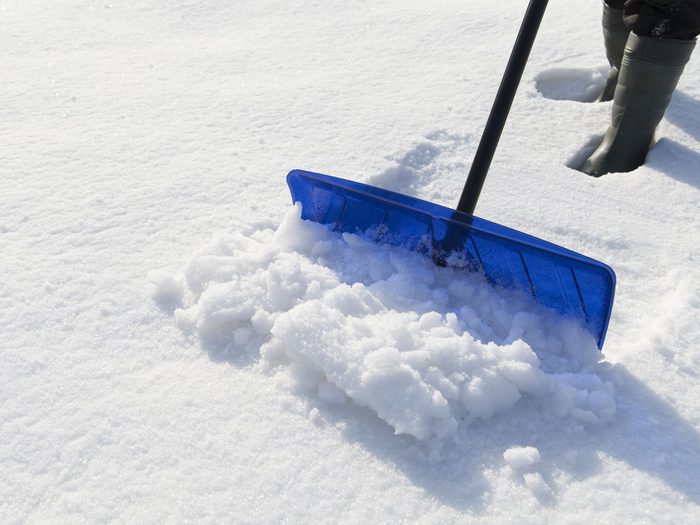
Proceed with caution
A nice dusting of snow looks like a winter wonderland from afar. The problem is that light dusting of snow may turn into heavy snow you need to shovel—and it could be dangerous to do so. Shovelling snow accounts for 11,500 hospital admissions per year, seven percent of which are cardiac-related, according to a 2011 study by the Center for Injury Research and Policy of the Research Institute at Nationwide Children’s Hospital. Cardiovascular injuries accounted for half of the hospitalizations and 100 percent of the fatalities over the 17-year span of data.
Keep in mind these important snow shovelling tips for your safety.
(Related: You Hurt Your Back Shovelling Snow—Now What?)
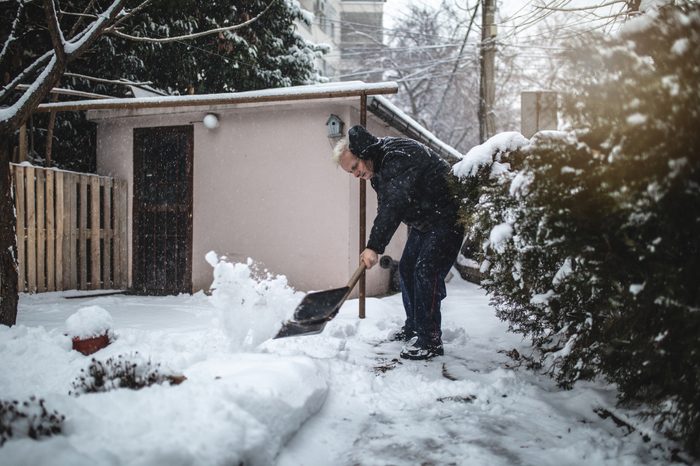
Shovelling snow is strenuous
Shovelling snow is physically taxing even for those in good shape. For those at high risk for heart disease, shovelling snow can be especially dangerous because of the strain that it puts on the heart. “In the cold weather, your smaller arteries, particularly in your feet and arms, have a tendency to constrict, and it creates a lot of back pressure on the heart,” says Shoeb Sitafalwalla, MD, a cardiologist at the Advocate Heart Institute at Advocate Lutheran General Hospital in Park Ridge, Illinois. “This, combined with the fact that you’re lifting or shovelling heavy amounts of snow, increases the heart rate and oxygen demand on the heart.”
If you have a pre-existing heart condition, you risk taxing your heart to a level that it simply can’t handle, Dr. Sitafalwalla says. If you have coronary artery disease, heart failure, congestive heart failure, a weakened heart muscle, or tight or leaky valves that impede blood flow to the heart, it’s best to avoid shovelling snow altogether.

Don’t eat a big meal before shovelling snow
Your gut will demand more blood to digest food, so you have less available for your heart. “This adds more strain to an already strained system,” Dr. Sitafalwalla says. Don’t shovel when you’ve been drinking, either: People may think the alcohol will warm them up, but the liquor is actually constricting the blood vessels, creating more back pressure on the heart.
(Related: A Guide to Back Pain Symptoms, Treatment, and Prevention)

Stay in shape year-round
Professor of medicine, Stephen Kopecky, MD, at Mayo Clinic in Rochester, Minnesota, advises getting in shape a few months prior to when you anticipate having to shovel snow. As physically taxing shovelling snow can be, those who exercise often and don’t have any pre-existing heart conditions can usually complete the task without major problems. For those who are inactive, Dr. Kopecky says they have a 70 to 80 percent higher risk of having a heart attack while shovelling than those who are active on a regular basis.
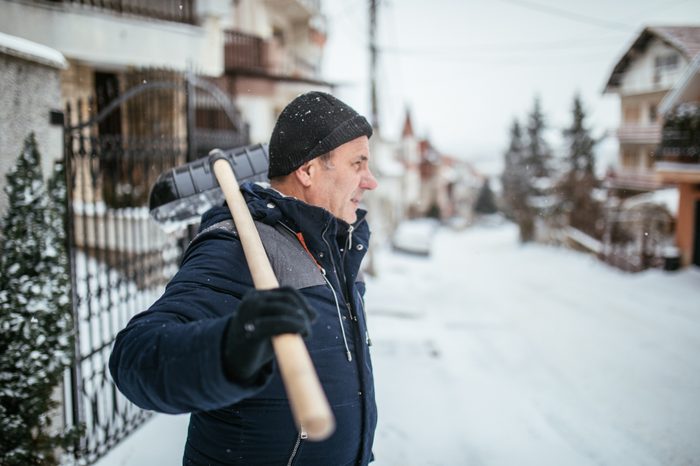
Do a warm-up
Make sure you stretch prior to shovelling to avoid back spasms and injuries. Back injuries are common, especially when shovelling heavy and wet snow, so a quick warm-up can help your body prepare for the strenuous task ahead. Dr. Kopecky recommends squats, toe touches, and stretching your arms and legs. Additionally, Dr. Sitafalwalla says proper footwear with a firm grip is essential to help reduce falls on slippery driveways.
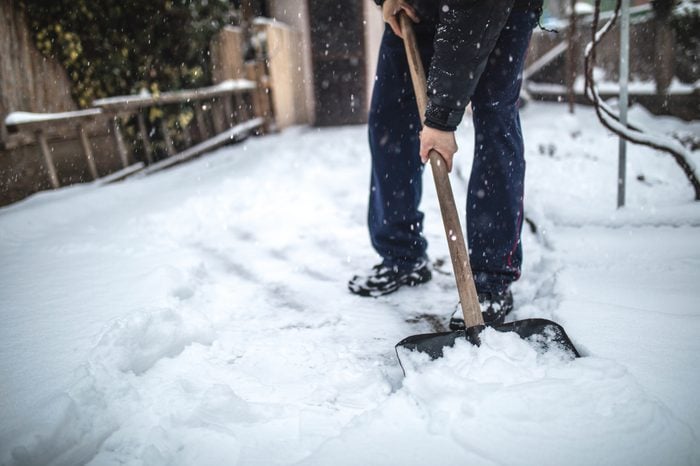
Shovel frequently
If a major snowstorm is in the forecast, make sure to shovel a few times throughout the storm (if it’s safe!) instead of waiting until it’s over. Shovelling or blowing smaller amounts of snow more frequently is less taxing than shovelling heavier and wetter snow all at once. Remember: Push the snow across the driveway and don’t lift it, says Dr. Kopecky, since lifting the snow raises blood pressure.
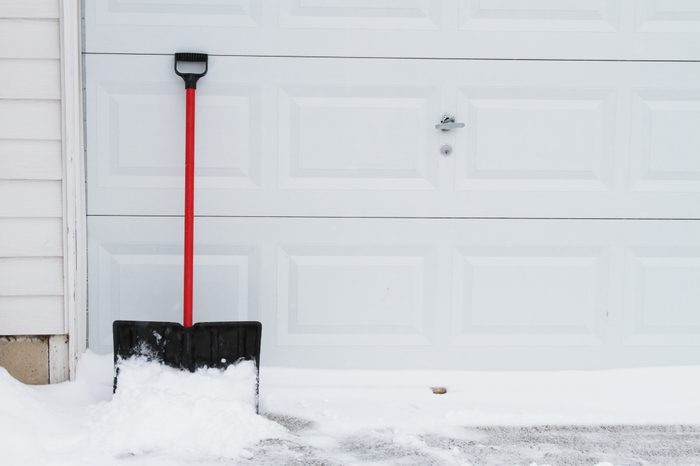
What to do if you feel discomfort
“If you feel discomfort—chest pain, chest tightness, and shortness of breath—stop shovelling,” Dr. Kopecky says. If the discomfort does not go away within five minutes, and you have medications for a pre-existing heart condition, take your pills.
Also try finding someone to sit with until symptoms dissipate, so you’re not alone if something happens. Dr. Kopecky advises individuals to go to the emergency room if discomfort persists for 20 minutes after shovelling.
(Related: Should You Use Ice or Heat for Back Pain? What Experts Say)
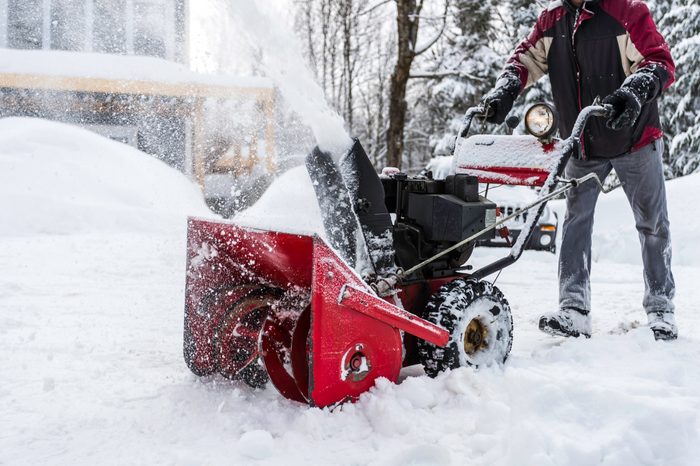
Consider getting someone to clear the snow for you
As you age, seek the help of a younger neighbour or a snow-removal service when it comes time to shovel snow. “If you have a heart condition, feel free to stimulate your locate economy and get some people around you to take care of it,” says Dr. Sitafalwalla.
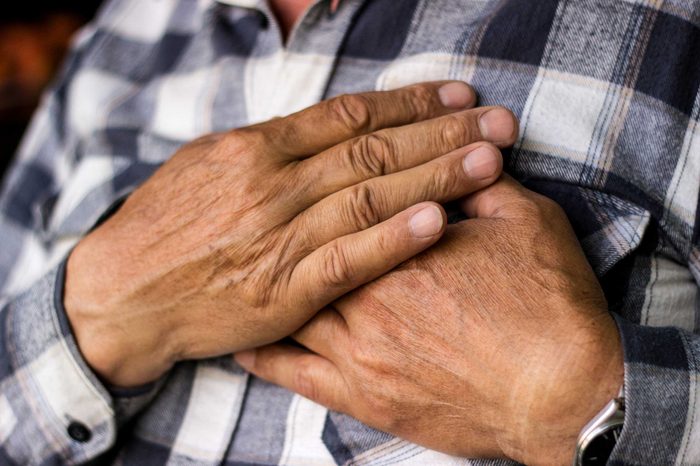
Know the warning signs of heart disease
There are several general warning signs of heart disease. If you notice any of the following, it’s important to consult a physician and avoid shovelling snow:
- Chest pain—described as chest pressure, burning, or discomfort—occurs upon exertion and calms down at rest. “Chest discomfort can often radiate to the arms, the neck, the back, and even the jaw, so that should be paid attention to as well,” says Dr. Sitafalwalla.
- Severe or unusual shortness of breath is another warning sign of heart disease.
- High blood pressure, high cholesterol, and diabetes are also risk factors for pre-existing heart disease.
Some women can feel all the above symptoms, but they can also feel none of them. For those who don’t experience any telling symptoms, Dr. Sitafalwalla says to be aware if the person expresses a vague sense of anxiety, severe fatigue, or discomfort near their chest or heart.
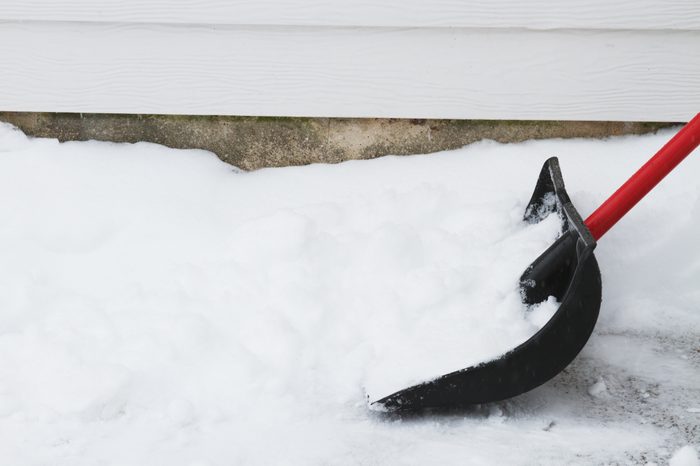
Shovelling snow burns a lot of calories
If you’re up for the physical task of shovelling snow, it can be a real calorie burner. According to Harvard Medical School, a 125-pound person shovelling by hand can burn up to 180 calories in 30 minutes.
